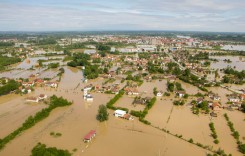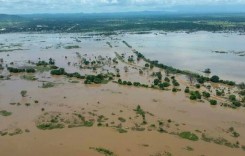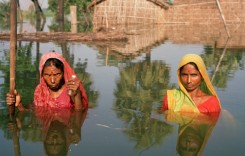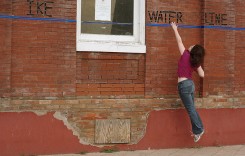The Tamil Nadu government confirmed in a statement today that 347 people died in floods in the state since 01 October 2015 and continued into November where 27 people were killed in Cuddalore and early December where the military were called in to carry out flood rescues and evacuations in Chennai.
During the flood disaster that devastated the state capital Chennai and other districts, as many as 17.64 lakh (1.764 million) people were rescued and housed in 6,605 relief centres.
Trade, manufacturing and agriculture were all adversely affected. The Tamil Nadu government statement reports that almost 4,000 cattle were killed in the floods.
Reinsurance broker Aon Benfield reports economic losses of $3 billion and insurance claims could reach $300 million.
Calamity of Severe Nature Declared
India’s central government has declared the recent floods in Tamil Nadu as a ‘calamity of severe nature’ making available Government of India aid through the Member of Parliament Local Area Development Division (MPLADS).
Chief Minister J. Jayalalithaa said on Thursday 10 December 2015 that this could amount to Rs.1 crore from MPLADS.
“Heeding my request, the central government has declared the floods (and resultant) damage as Calamity of Severe Nature,” she said in a statement.
$3 Billion Economic Losses
Reinsurance broker Aon Benfield said in its monthly report on global catastrophes that total economic losses in India were estimated to reach as high as INR 200 billion (USD 3.0 billion). India’s General Insurance Corporation cited claims possibly reaching INR20 billion (USD300 million) .
The report added:
Portions of Tamil Nadu and Andhra Pradesh states in India and Sri Lanka were heavily impacted by floods that claimed at least 386 lives. There were severe impacts to agricultural interests and infrastructure as rivers swelled into both rural and urban areas. The Chennai metropolitan region was especially damaged by the event.
Adityam Krovvidi, Head of Impact Forecasting Asia Pacific, said:
“New economic developments in Asia are taking place in flood plains and marsh lands with scant attention to drainage, thus increasing run-off and flooding. The 100-year rainfall event in Chennai exposed the inherent weakness of the one-dimensional nature of this economic pursuit, and highlights the need for serious introspection, implementation of mitigation measures and the redesign of urban landscapes.
“Risk assessment can play a major role in awareness and insurance in mitigating the financial hardships. The large gap between the economic and insured loss from the Chennai flood event further emphasises the need for greater insurance penetration in large industrialized cities in Asia. This will become even more important as Asian megacities continue to grow and the risk of major urban flood events increases.”








